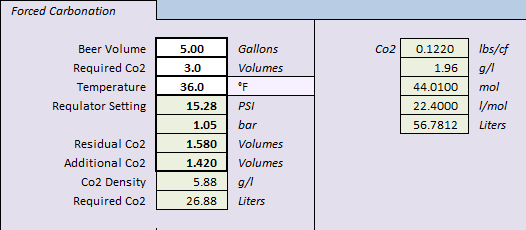Hi,
I'm just getting into kegging and am repurposing a chest freezer to a keezer using an inkbird temp controller.
Still figuring things out but to be able to fit 3 5 gallon corny kegs, I can only fit a 2.5lb co2 tank inside and don't want to do any drilling to leave the tank outside the freezer.
I'm wondering, from peoples experience, how many kegs roughly can be carbonated AND served with a 2.5 lb tank? Obviously assuming no leaks or anything.
I'm thinking that if I can't carb and serve 3(5 gallon) kegs per tank then I'll probably just get a 5 lb tank and only put 2 kegs instead of 3.
I've been using a different fridge to do 2 kegs at a time and it's so great! Cant believe I bottled for so long!
Thanks,
Grad
I'm just getting into kegging and am repurposing a chest freezer to a keezer using an inkbird temp controller.
Still figuring things out but to be able to fit 3 5 gallon corny kegs, I can only fit a 2.5lb co2 tank inside and don't want to do any drilling to leave the tank outside the freezer.
I'm wondering, from peoples experience, how many kegs roughly can be carbonated AND served with a 2.5 lb tank? Obviously assuming no leaks or anything.
I'm thinking that if I can't carb and serve 3(5 gallon) kegs per tank then I'll probably just get a 5 lb tank and only put 2 kegs instead of 3.
I've been using a different fridge to do 2 kegs at a time and it's so great! Cant believe I bottled for so long!
Thanks,
Grad



